Butterflies, Caterpillars and Chrysalis oh my….
PCWD is enjoying hosting the majestic Monarch butterflies and watching the hungry little caterpillars grow. We have been watching the Monarch’s for months now. They flutter into the garden leaving their tiny little egg behind. It wasn’t long before we started discovering tiny little baby caterpillars. For weeks we found more eggs and more caterpillars. Now, everyday we see the changes in these little growing caterpillars and we have started finding newly formed chrysalis.
Did you know that the percentage of monarchs that survive from egg to adulthood is very low? Some researchers believe that less than 10% of the monarch’s that make it to adulthood and others think it is less than 5% that survive to become a Monarch Butterfly. Here at PCWD we are enthusiastic about helping support these majestic creatures along their journey of transformation. It seems that the Monarchs have been enjoying the Milkweed garden dedicated to them.
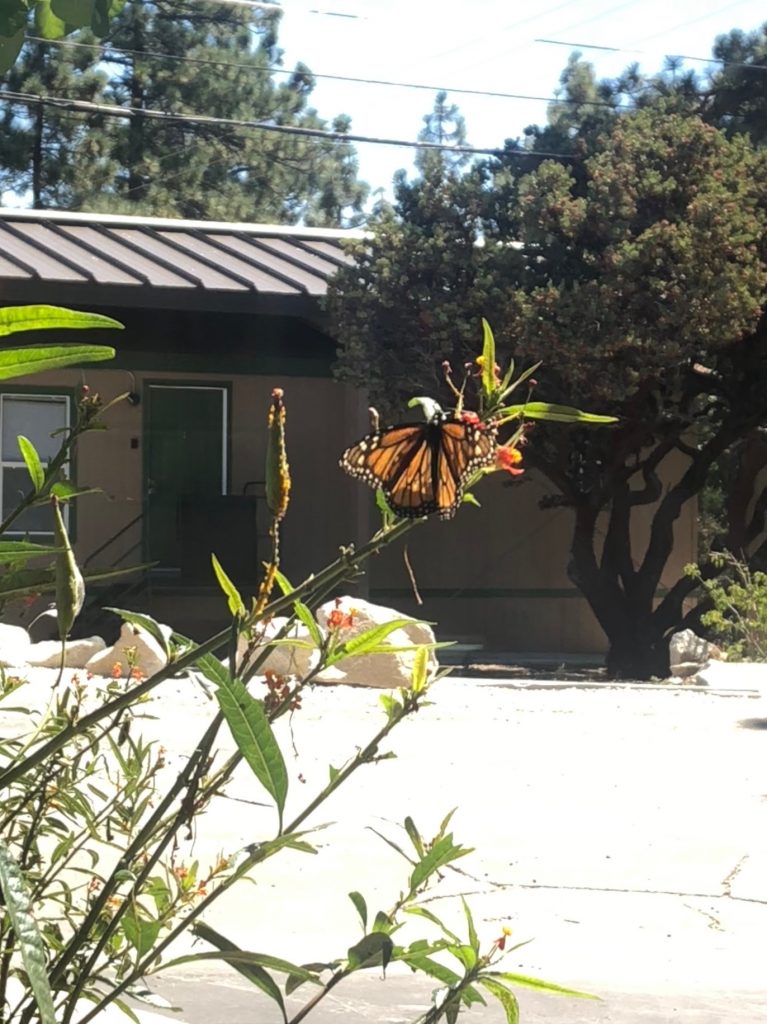
Majestic Monarch Butterfly 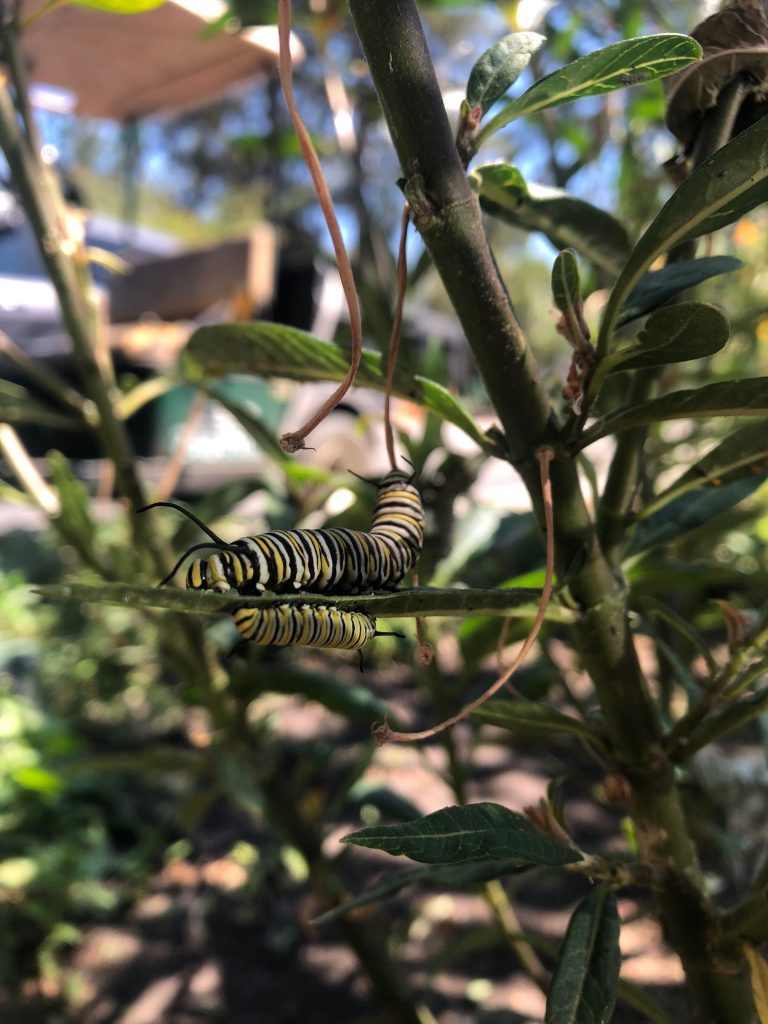
Big and little hungry caterpillars 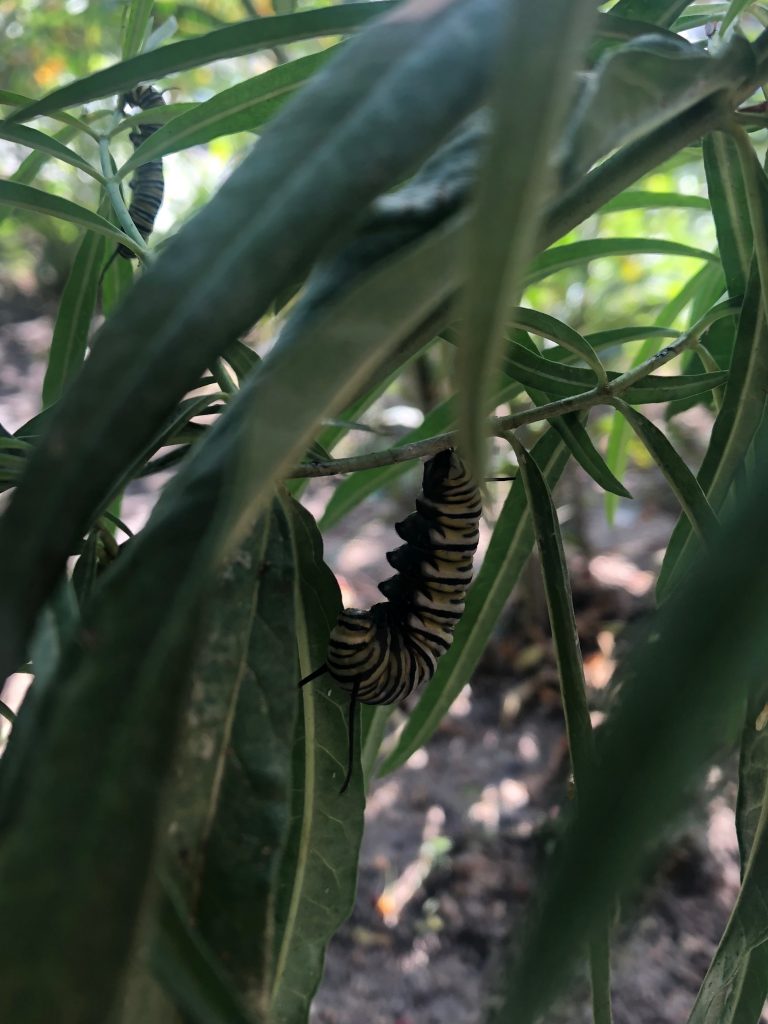
Monarch caterpillar’s make a J shape befor forming a chrysalis 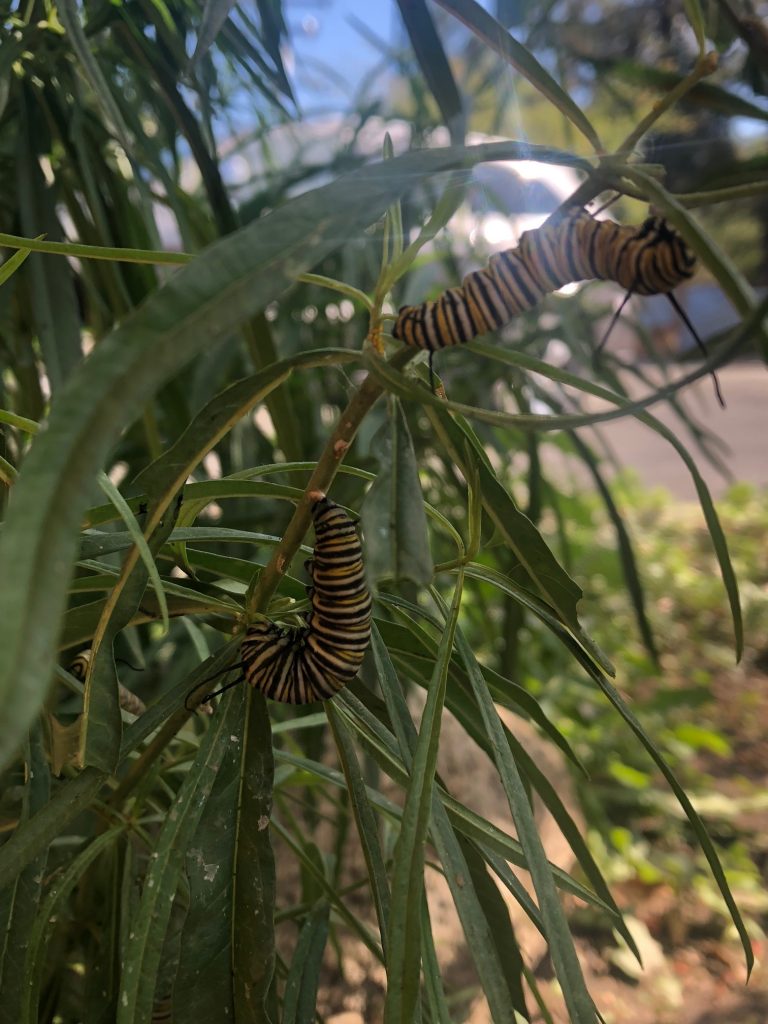
One hungry caterpillar and one ready to transform 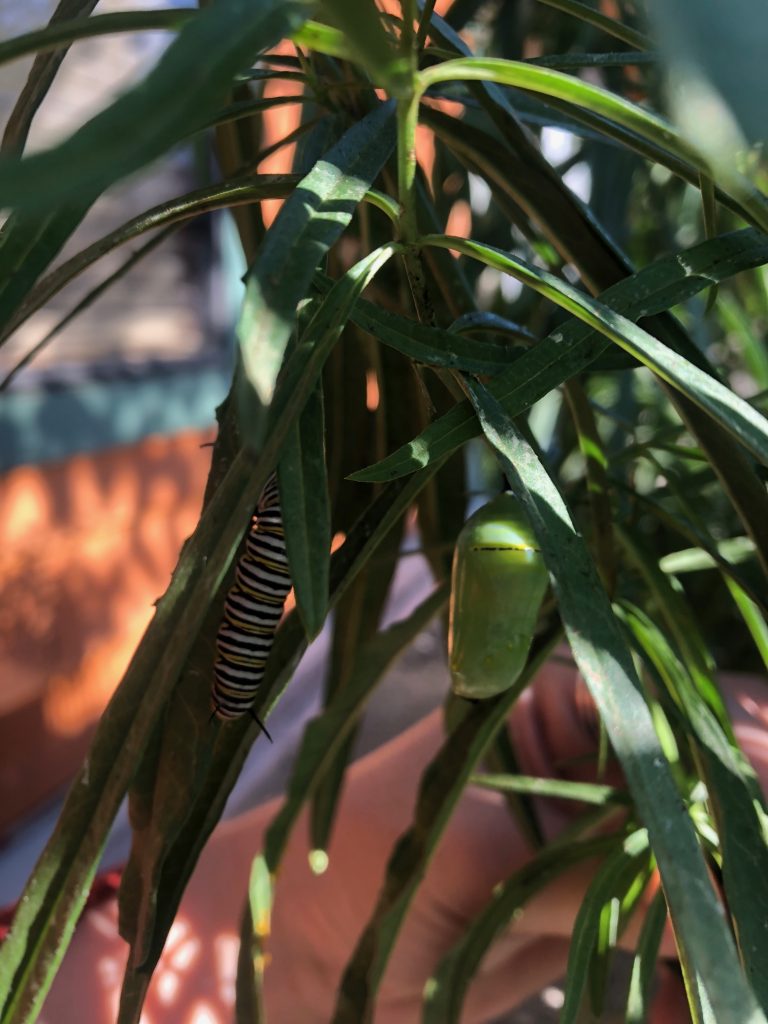
Caterpillar and a chrysalis 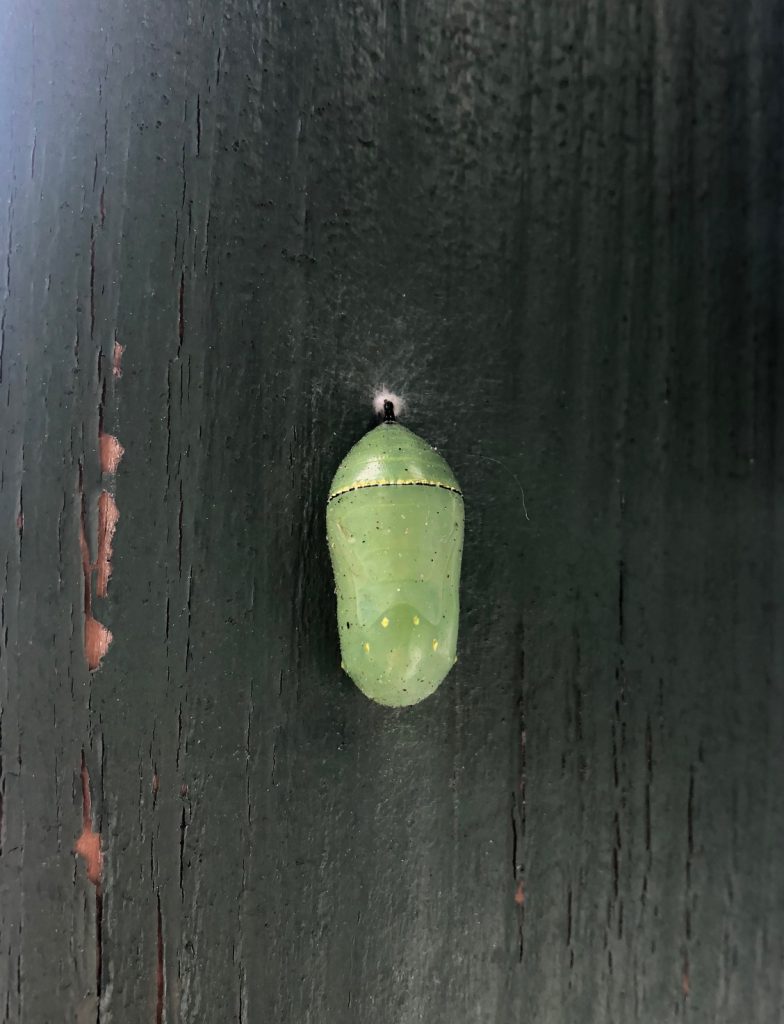
Beautiful chrysalis at the office 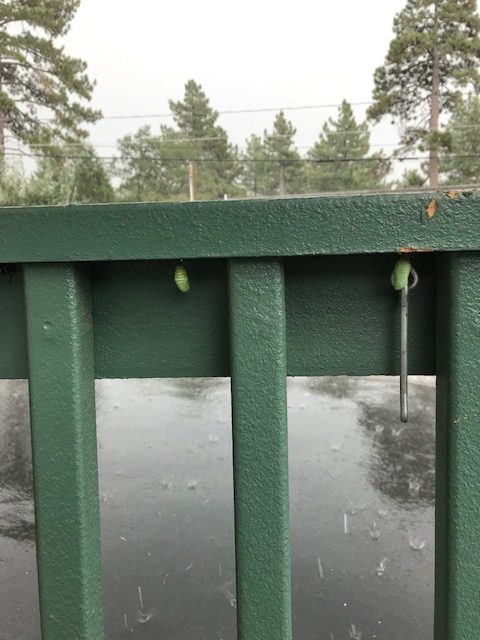
couple of chrysalis hanging in the rain 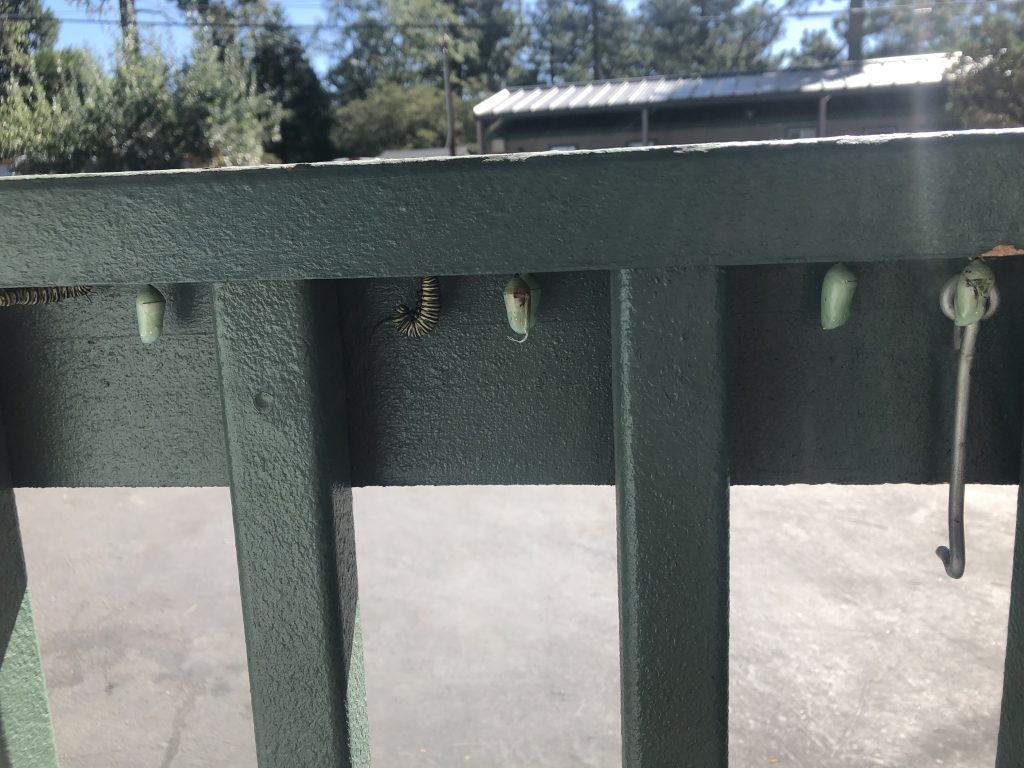
More caterpillars coming to join the chrysalis
Did you know that Monarch Butterflies don’t make a cocoon but the actually form what is called a chrysalis. For the most part, butterfly caterpillars do not build cocoons, but instead harden into chrysalis during their transnational pupal stage. There are a few exceptions but primarily it is the moth that surrounds itself in a cocoon for protection during its pupal stage. The major difference between a chrysalis and a cocoon is that a chrysalis is the hardened body of a butterfly pupa, whereas a cocoon is an external structure constructed by larvae to protect themselves during the pupal stage. The life cycle for both the moth and the butterfly is very much the same. Starting with the adult female laying eggs, which hatch into caterpillars. As caterpillars grow, they molt and shed their skin four to six times before transforming into pupae. The pupa is the final stage of development, during which metamorphosis takes place over a period of about two weeks. At the end of which an adult butterfly or moth emerges. For Monarch butterflies like most butterflies the chrysalis is the pupal stage of butterfly development. Just before its final molt, a butterfly caterpillar spins a small disk of silk to attach itself to the underside of a leaf or twig. The caterpillar sheds its skin one last time as the pupa emerges. The outer surface of the pupa hardens into a protective shell, which often takes on a color and shape to help blend it into its surroundings.
